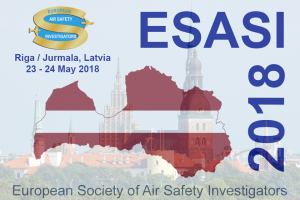Dispatcher Forced to Run After Distracted Pushback
A dispatcher was forced to run when an aircraft started to taxi while he was still connected to it. On 25 January 2017, a Jetstar Airbus A320-232, VH-VGJ was being prepared for pushback from bay 4 at Newcastle (Williamtown) Airport, NSW.
The Australian Transport Safety Bureau (ATSB) report that:
At about 1836, the crew received a clearance from the surface movement controller to pushback, which placed VGJ to the right rear quarter of an aircraft parked on bay 5.
The aircraft dispatcher walked beside the aircraft and was connected to the nose of VGJ by a headset for communications with the flight crew.
At about 1838, the crew of the aircraft on bay 5 requested a clearance to taxi for departure. At this stage, the crew on board VGJ interrupted their ‘after start flows’ to monitor the other aircraft, which they believed posed a collision risk.
At about 1840, the crew on board VGJ requested and received a clearance to taxi for departure.
The dispatcher for VGJ was still connected to the aircraft nose with their headset and waiting for their clearance from the flight crew to disconnect. They observed the taxi lights for VGJ illuminate, then they heard the engine noise increase, and then the aircraft started to taxi.
…they immediately disconnected their headset from the aircraft and ran clear to the left of the aircraft towards the terminal…
Once the dispatcher was clear of the aircraft, they turned around to display the nose wheel steering pin to the flight crew, but the captain was not looking towards them.
Flight Crew Procedures
After starting both engines, the crew conduct ‘after start flows’. These are memory item checks split between the pilot flying and pilot monitoring.
The announcement to the dispatcher that they are clear to disconnect is the penultimate item. The last ‘flow’ item is for the flight crew to complete the challenge and response ‘after start checklist’. The last item on that five point checklist is confirmation that the dispatcher has been sighted clear of the aircraft. Only after completion of the ‘after start checklist’ should the crew request taxi clearance and turn on the taxi light.
ATSB Analysis
The ATSB explain that after the distraction of the aircraft on bay 5 the captain of VH-VGJ misidentified the dispatcher for the bay 5 aircraft as their own dispatcher.
At this time, the tug, which would normally wait beside the departing aircraft for the dispatcher, had moved away from VGJ towards the terminal to avoid a conflict with the bay 5 aircraft. Therefore, the dispatcher sighted by the captain, was next to the tug used for the pushback of VGJ.
This potentially provided an association between the tug and the dispatcher in the mind of the captain, who assumed the dispatcher had removed the nose wheel steering pin and moved away from the aircraft.
The diversion of the flight crew’s attention away from their ‘after start flows’ probably resulted in the pilot flying not completing their memory items. This was not detected in the ‘after start checklist’ because the captain had misidentified the dispatcher for the bay 5 aircraft as the dispatcher for VGJ. Consequently, the dispatcher connected to VGJ was not cleared to disconnect prior to VGJ starting to taxi.
ATSB Safety Message
Following this serious incident the captain reported that their most important lesson was distraction management.
They considered either slowing down the ‘after start flows’ or re-starting the ‘flows’ as the most practical risk mitigation strategies.
Distraction
The Flight Safety Foundation (FSF) has issued guidance that after interruptions/distractions, situation awareness should be re-established as follows:
- Identify: What was I doing?
- Ask: Where was I distracted?
- Decide/act: What decision or action shall I take to get ‘back on track’?
Other Safety Resources
- Ground Collision Under Pressure: Challenger vs ATV: 1-0 Pressure, changes of plan and distractions all feature in this ground collision where a Challenger overturned an All Terrain Vehicle.
- A320 Rolls Back on Stand: Incomplete Maintenance Procedures and Ground Handling Deviations: The brakes had been set OFF during maintenance trouble shooting and the chocks removed prematurely, so the aircraft rolled when a tug with a u/s radio was being swapped out.
- Jetstar Overworked Yuletide Loading Error A loading incident during a busy-pre Christmas period highlights the effect of high workload on data input errors, as well as the importance of system feedback of incorrectly entered data.
- UPDATE 22 April 2018: A330 Starts to Taxi Before Tug is Clear ATSB say misunderstandings by the parties involved led to incorrect expectations and the aircraft beginning to taxi prior to the tug moving clear.
- UPDATE 10 July 2019: Fatal B206L3 Cell Phone Discount Distracted CFIT
- UPDATE 12 October 2020: Runaway Dash 8 Q400 at Aberdeen after Miscommunication Over Chocks
The UK CAA has issued this infographic on distraction:
Aerossurance is pleased to sponsor the 9th European Society of Air Safety Investigators (ESASI) Regional Seminar in Riga, Latvia 23 and 24 May 2018.





Recent Comments